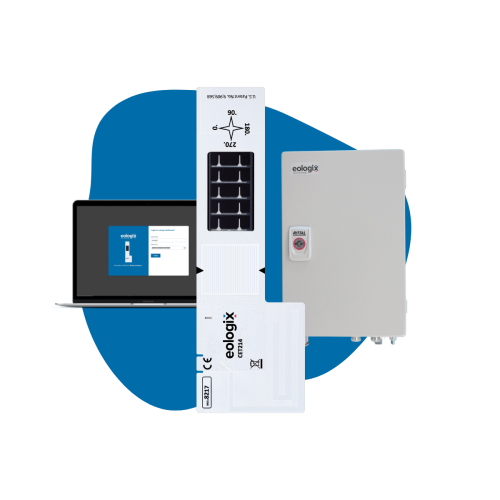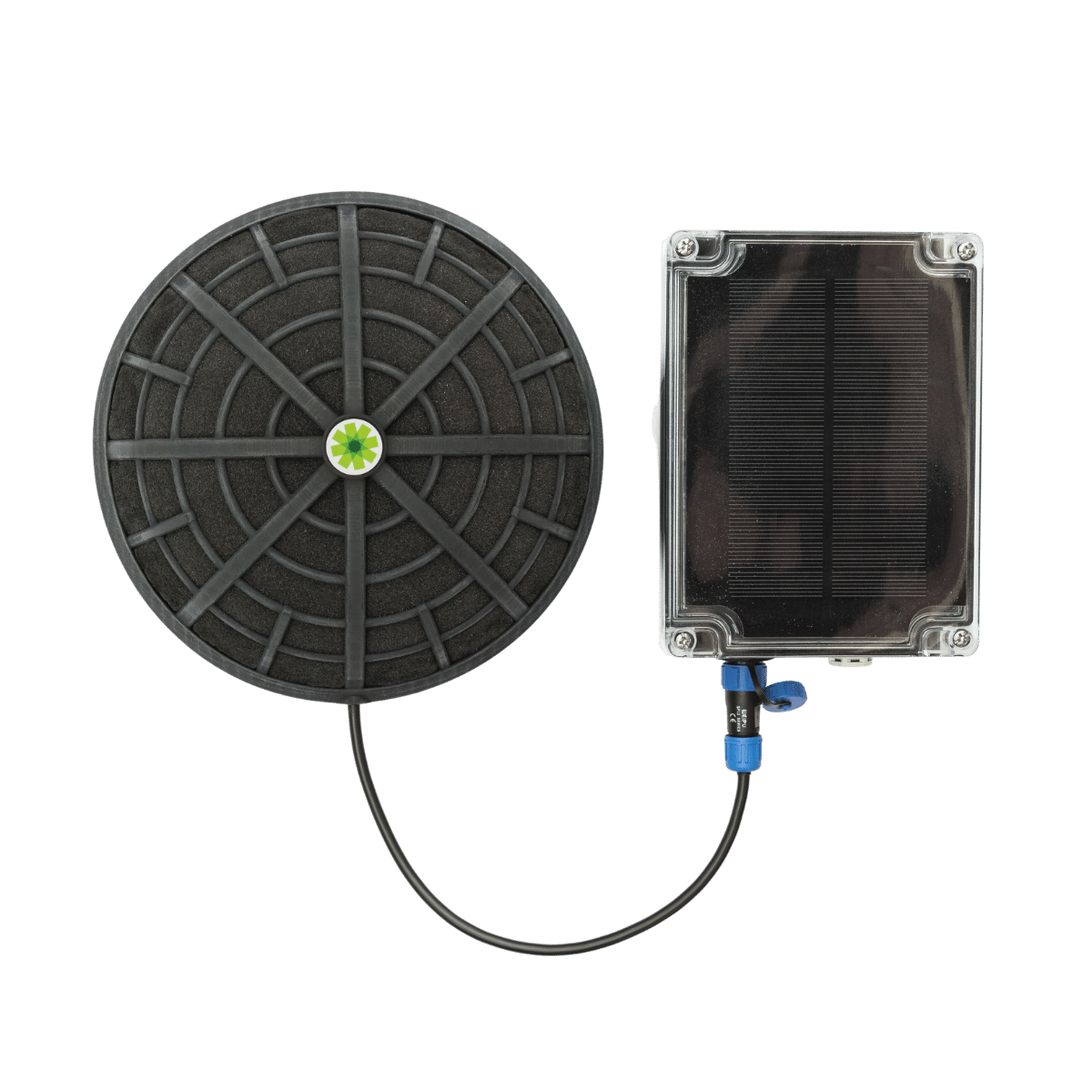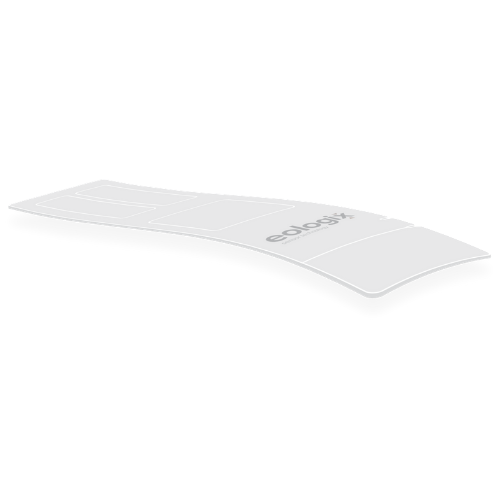Ice accumulation on wind turbines has a relevant influence on operational management during the cold season. In addition to reduced yield due to altered aerodynamic properties, the safety of the turbine and its surroundings is a central issue.
For early and accurate detection of icing, we offer – also retrofittable – on-blade sensor systems based on wireless, flexible and energy-autonomous smart sensors measuring directly on the surface of the rotor blades.














